Important Considerations for Concrete Pool Decks
A well-designed and properly constructed pool deck can greatly enhance the beauty, safety, and functionality of your residential swimming pool area. Concrete pool decks are a popular choice due to their durability and versatility. However, several essential considerations must be taken into account to ensure that your pool deck serves its purpose effectively and complements your outdoor living space. In this blog, we will explore these important considerations for residential concrete pool decks.
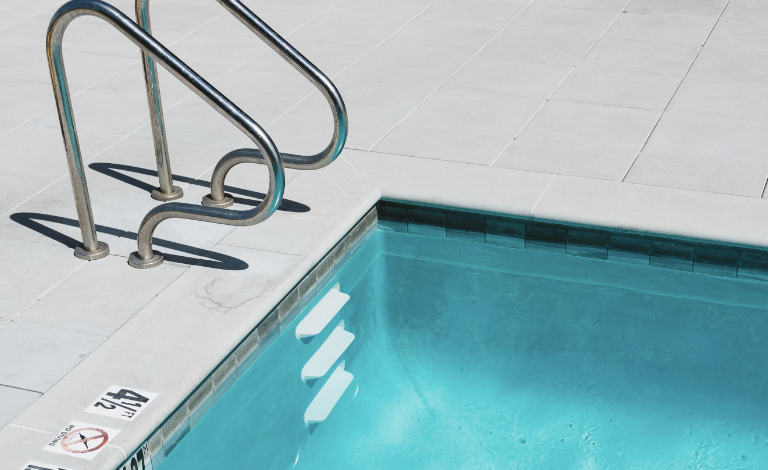
Design and Aesthetics
When planning your pool deck, consider the overall design and aesthetics. Your pool deck should harmonize with the architectural style of your home and the surrounding landscape. Think about the color, texture, and pattern of the concrete. Decorative options like stamped concrete, exposed aggregate, or colored concrete can add visual interest and enhance the overall appeal of the pool area.
Safety and Slip Resistance
Safety should be a top priority for your pool deck. Concrete can become slippery when wet, increasing the risk of accidents. To address this concern, choose a surface finish that provides slip resistance. Options include adding a non-slip additive to the sealer or selecting a textured finish. This ensures that your pool deck is safe for both swimmers and sunbathers.
Drainage
Proper drainage is essential for a pool deck to prevent water accumulation and maintain its structural integrity. Ensure that the deck is slightly sloped away from the pool to allow water to flow away naturally. You can also incorporate a drainage system, such as French drains or deck drains, to effectively channel water away from the pool area.
Durability and Maintenance
Concrete is a durable material, but it still requires regular maintenance to keep it in top condition. Seal your concrete pool deck to protect it from water penetration, staining, and damage from pool chemicals. Routine cleaning and occasional resealing are necessary to extend its lifespan and maintain its appearance.
Comfort and Heat Reflectivity
Consider the comfort of your pool deck, especially in hot climates. Concrete can become scorching in direct sunlight. To mitigate this, choose a finish that reflects heat, such as light-colored concrete or coatings with solar-reflective properties. Additionally, using outdoor rugs or providing shaded areas with umbrellas and pergolas can make your deck more comfortable for barefoot walking.
Expansion Joints
Concrete expands and contracts with temperature fluctuations. To prevent cracks and other issues caused by this movement, expansion joints should be strategically placed in the pool deck. These joints accommodate expansion and contraction, ensuring the structural integrity of the concrete.
Local Building Codes and Permits
Before starting any construction project, including a pool deck, check with your local building department to understand the relevant codes and permitting requirements. Compliance with these regulations is crucial to avoid potential legal issues and ensure the safety and quality of your pool deck.
Budget and Materials
Finally, consider your budget when planning your pool deck. While concrete is a cost-effective option compared to some other materials, factors like decorative finishes, size, and complexity of the design can impact the cost. Discuss your budget with a contractor to find the right balance between aesthetics and affordability.
Conclusion
A well-designed and properly constructed concrete pool deck can transform your outdoor living space into a functional and beautiful area for relaxation and entertainment. By carefully considering design, safety, drainage, maintenance, comfort, and compliance with local regulations, you can ensure that your residential concrete pool deck meets all your needs and enhances your poolside experience for years to come. Consulting with a professional concrete contractor can help you make informed decisions and bring your vision to life.
Best Practices for Constructing Durable and Stylish Concrete Patios
A well-designed and properly constructed concrete patio can be a beautiful and functional addition to any residential property. Concrete patios are known for their durability, versatility, and potential for creative design. To ensure that your patio stands the test of time while enhancing the aesthetics of your outdoor space, it’s essential to follow best practices in its construction. In this blog, we’ll explore the key steps and considerations for building durable and stylish residential concrete patios.
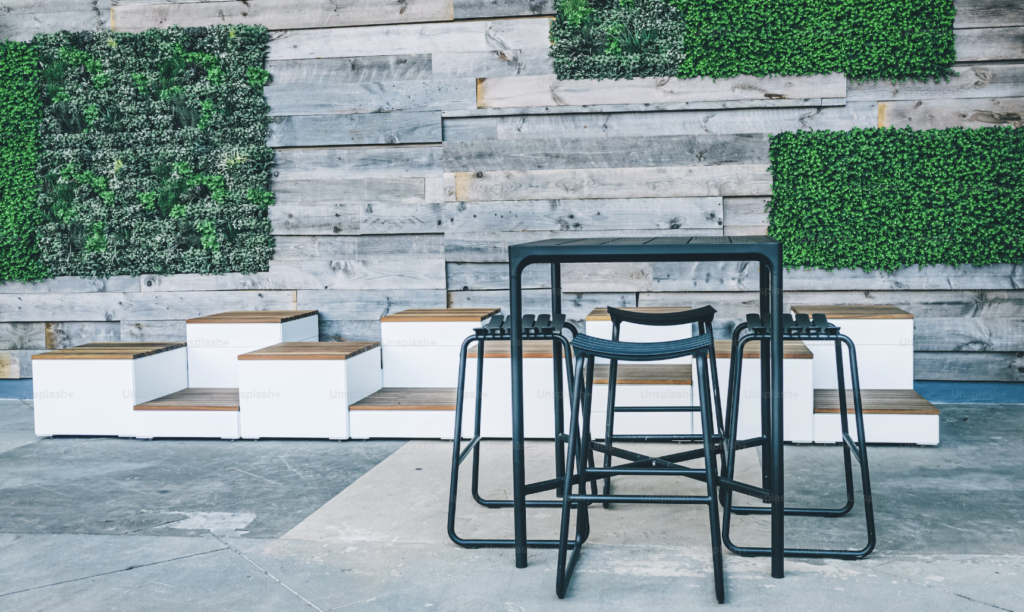
1. Planning and Design
The first step in constructing a successful concrete patio is thorough planning and design. Consider the following aspects:
- Location: Choose an ideal location for your patio that takes into account factors like sun exposure, privacy, and proximity to the house.
- Size and Layout: Determine the size and layout of the patio based on your intended use, whether it’s for dining, lounging, or entertaining.
- Design Elements: Explore design elements such as shape, patterns, colors, and any additional features like built-in seating, fire pits, or water features.
- Permitting: Check local building codes and permitting requirements to ensure compliance with regulations.
2. Site Preparation
Proper site preparation is crucial for the longevity of your patio. Here’s what to consider:
- Excavation: Excavate the area to the desired depth, typically 4-6 inches for residential patios.
- Base Material: Lay a stable base of crushed stone or gravel, ensuring proper compaction to prevent settling.
- Slope: Create a slight slope away from the house to facilitate water drainage.
- Reinforcement: Depending on your patio’s size and expected loads, consider adding reinforcement like rebar or wire mesh for added strength.
3. Concrete Mix and Pouring
Choosing the right concrete mix and executing the pouring process correctly are crucial for a durable patio:
- Concrete Mix: Select a high-quality concrete mix suitable for outdoor use. Consider options with additives for added strength and durability.
- Placement: Pour the concrete evenly and use a screed board or bull float to level and smooth the surface.
- Finishing: Add texture or decorative patterns while the concrete is still wet, such as stamped patterns or brushed finishes.
4. Curing
Proper curing is essential for concrete to reach its full strength and durability. It involves keeping the concrete moist for an extended period after pouring. This can be achieved through wet curing with water, applying curing compounds, or covering the patio with plastic sheeting. Curing typically takes several days.
5. Sealing and Maintenance
Once your concrete patio has cured, consider applying a sealer to protect it from moisture, staining, and UV damage. Regular maintenance, such as cleaning and resealing every few years, will help extend the life and appearance of your patio.
6. Design and Aesthetics
The aesthetics of your concrete patio are just as important as its durability. Consider these design tips:
- Color: Explore integral color options or surface stains to add color to your patio.
- Decorative Elements: Incorporate decorative patterns, borders, or contrasting colors for added visual interest.
- Furniture and Accessories: Choose outdoor furniture and accessories that complement the style and color scheme of your patio.
- Landscaping: Soften the hardscape with landscaping elements like plants, shrubs, or container gardens.
Conclusion
A well-constructed concrete patio can become the centerpiece of your outdoor living space, offering both functionality and style. By following best practices in planning, site preparation, concrete mix selection, pouring, curing, sealing, and design, you can ensure that your residential concrete patio not only looks stunning but also stands the test of time, providing years of enjoyment for you and your family. Consulting with a professional concrete contractor can help you navigate the process and achieve the patio of your dreams.
Exploring Creative Patterns and Textures in Concrete Flooring
Concrete flooring has evolved beyond its traditional gray, utilitarian appearance and is now a versatile canvas for creative expression in residential spaces. With innovative techniques and a variety of finishing options, concrete floors can be transformed into stunning works of art. In this blog, we’ll explore the exciting world of creative patterns and textures in residential concrete flooring.
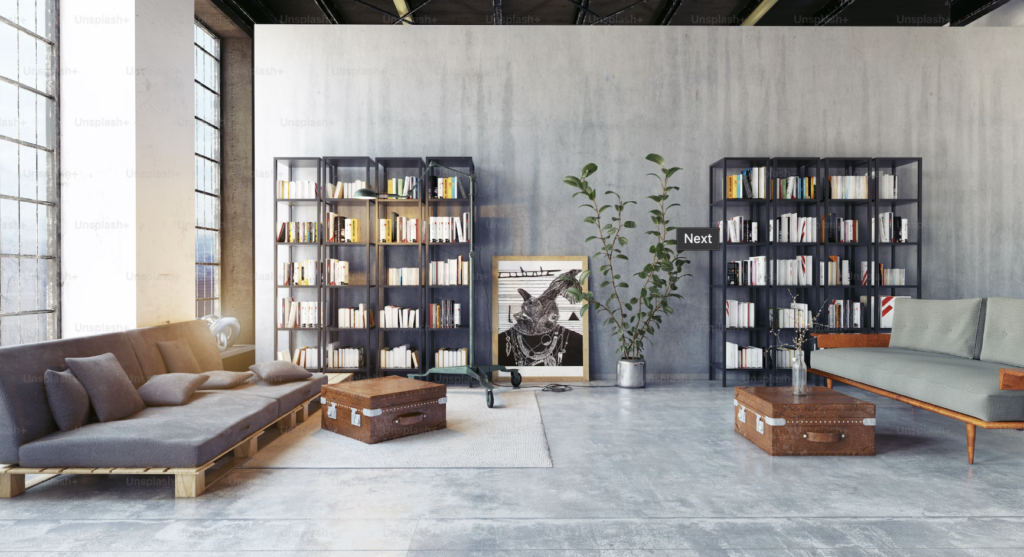
Patterns and Textures: The Essentials
Before diving into the creative possibilities, it’s essential to understand the fundamentals of patterns and textures in concrete flooring:
- Patterns: Patterns are repetitive designs or motifs that can be added to the concrete surface. They can mimic natural materials like wood, stone, or tile, or they can be entirely unique and abstract.
- Textures: Textures refer to the tactile quality of the concrete surface. They can be smooth, rough, or anywhere in between. Textures enhance the visual and sensory experience of the flooring.
Now, let’s explore some innovative ways to incorporate patterns and textures into your residential concrete floors:
1. Stamped Concrete
Stamped concrete is a popular method for adding patterns and textures to your floors. Using rubber or polyurethane stamps, concrete can be imprinted with designs that resemble brick, slate, cobblestone, or even intricate geometric patterns. Stamped concrete can be applied to interior and exterior surfaces, providing a durable and visually appealing finish.
2. Acid Staining
Acid staining is a chemical reaction that transforms the color and texture of concrete. This technique creates a marbled or mottled appearance, with rich, earthy tones that mimic the look of natural stone. Acid stains can be customized to achieve various colors and patterns, making each floor unique.
3. Polished Concrete
Polished concrete is known for its smooth, glossy surface, but it can also incorporate creative patterns and textures. During the polishing process, decorative aggregates, such as glass, shells, or colorful stones, can be added to create intricate designs or logos within the concrete. This approach adds depth and visual interest to the floor.
4. Exposed Aggregate
Exposed aggregate concrete involves revealing the natural texture and beauty of the aggregates within the concrete mix. After the surface is poured and partially cured, the top layer of cement is removed, exposing the aggregates. This technique offers a textured and visually appealing surface that can incorporate a variety of colored aggregates for added visual interest.
5. Engraved Concrete
Engraving allows for precise customization of concrete floors. Intricate designs, logos, or even inspirational quotes can be engraved into the concrete surface. Engraving can be done either during the initial pour or on an existing concrete floor. It’s an excellent way to add a personal touch to your residential space.
6. Terrazzo Flooring
Terrazzo is a classic flooring option that combines concrete with decorative aggregates like marble, glass, or granite chips. The result is a stunning mosaic-like surface with a unique blend of patterns and textures. Terrazzo offers a timeless and elegant look for residential interiors.
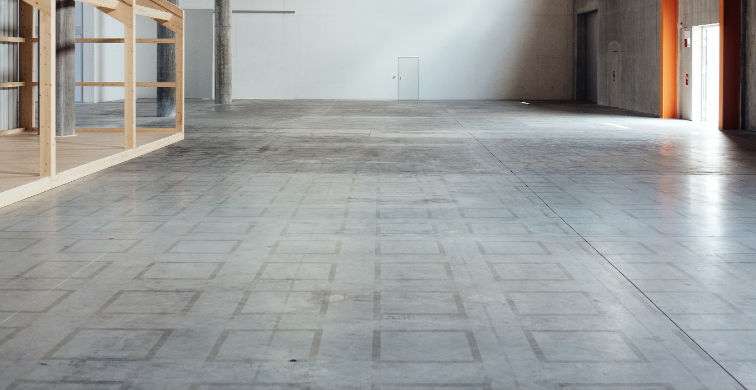
Conclusion
Residential concrete flooring is no longer limited to plain gray slabs. Creative patterns and textures can transform your floors into works of art that reflect your personal style and enhance the overall aesthetics of your home. Whether you choose stamped concrete, acid staining, polished concrete, exposed aggregate, engraving, or terrazzo, the possibilities are endless. Consult with a professional concrete contractor or designer to explore the best options for achieving your desired look and feel in your residential concrete flooring project.
Tips for Repairing and Restoring Cracks in Concrete Surfaces
Cracks in residential concrete surfaces are a common issue that many homeowners face. These cracks can not only affect the aesthetics of your property but, if left unattended, they can also lead to more significant structural problems. Fortunately, repairing and restoring cracks in concrete surfaces is a manageable DIY project that can improve the appearance and longevity of your concrete. In this blog, we’ll provide valuable tips on how to effectively repair and restore cracks in concrete surfaces.
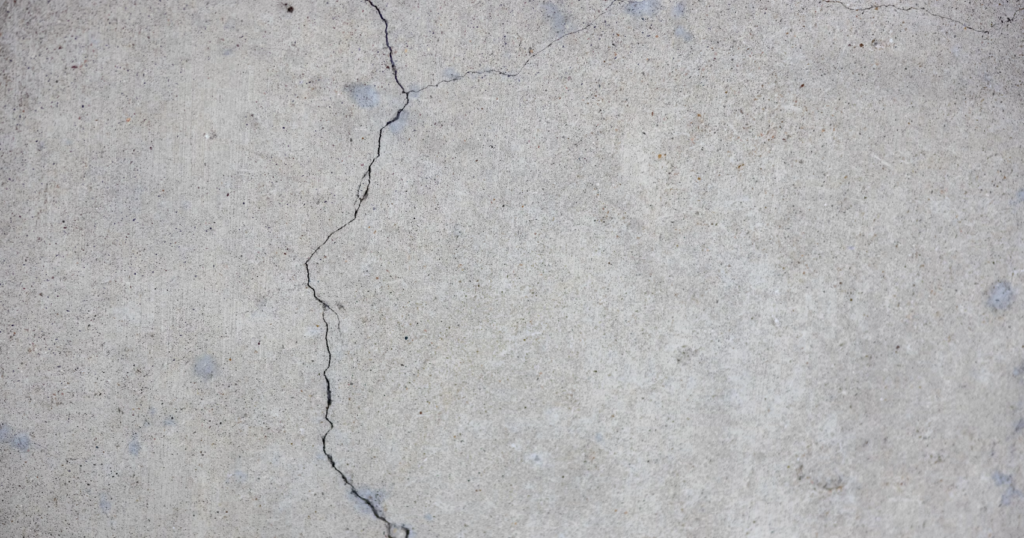
Identify the Type of Crack
Before starting any repair work, it’s essential to identify the type of crack you’re dealing with. There are two primary categories:
- Structural Cracks: These cracks are typically wider, deeper, and more severe. They may indicate underlying structural issues and require professional evaluation and repair.
- Non-structural Cracks: These are superficial cracks that don’t compromise the integrity of the concrete. They are commonly caused by shrinkage, temperature changes, or surface wear.
For non-structural cracks, you can proceed with DIY repair, but if you suspect structural issues, it’s best to consult a professional.
Gather Necessary Tools and Materials
To repair non-structural cracks in your concrete, you’ll need some basic tools and materials:
- Safety gear: Gloves, safety glasses, and a dust mask to protect yourself during the repair process.
- Concrete cleaner: To remove dirt, debris, and loose material from the crack.
- Concrete patching compound: A high-quality concrete patching material suitable for your specific crack type.
- Trowel or putty knife: For applying the patching compound.
- Caulking gun: If you’re using a concrete caulk for smaller cracks.
- Wire brush or grinder: For cleaning and smoothing the crack edges.
Clean the Crack
Clean the crack thoroughly to ensure proper adhesion of the patching material. Use a wire brush or grinder to remove loose debris, dirt, and any contaminants. Then, wash the crack with a concrete cleaner and let it dry completely.
Choose the Right Repair Material
Select the appropriate patching material for your crack. For smaller, shallow cracks, a concrete caulk or sealant may suffice. For larger or deeper cracks, consider a concrete patching compound that matches your existing concrete in color and texture.
Apply the Patching Compound or Caulk
Follow the manufacturer’s instructions for mixing and applying the patching compound. Fill the crack completely, ensuring the material is slightly overfilled to account for shrinkage during drying. For concrete caulk, simply apply it directly into the crack. Smooth the surface with a putty knife or trowel to achieve a uniform finish.
Allow Proper Curing Time
Give the patching compound or caulk sufficient time to cure. The drying time can vary depending on the product and environmental conditions, so refer to the manufacturer’s recommendations. Keep the patched area protected from moisture or foot traffic during this period.
Seal and Protect
Once the patching material is fully cured, consider applying a concrete sealer to protect the repaired area from moisture, chemicals, and further damage. This step will help ensure the longevity of your repair.
Conclusion
Repairing and restoring cracks in residential concrete surfaces doesn’t have to be a daunting task. By identifying the type of crack, gathering the necessary tools and materials, cleaning the crack thoroughly, choosing the right repair material, applying it correctly, allowing for proper curing, and sealing the repaired area, you can effectively address cracks and maintain the integrity of your concrete surfaces. Regular maintenance and timely repairs will help keep your concrete surfaces looking their best and ensure their longevity. For more complicated projects, please reach out to your local concrete contractor professionals.
Green Solutions: Eco-friendly Practices in Residential Concrete Construction
As environmental concerns continue to grow, the construction industry is embracing eco-friendly practices to reduce its environmental footprint. Residential concrete construction, in particular, has witnessed a shift towards more sustainable methods and materials. In this blog, we will explore several green solutions and eco-friendly practices that are making waves in residential concrete construction, helping homeowners reduce their environmental impact while maintaining the structural integrity of their homes.
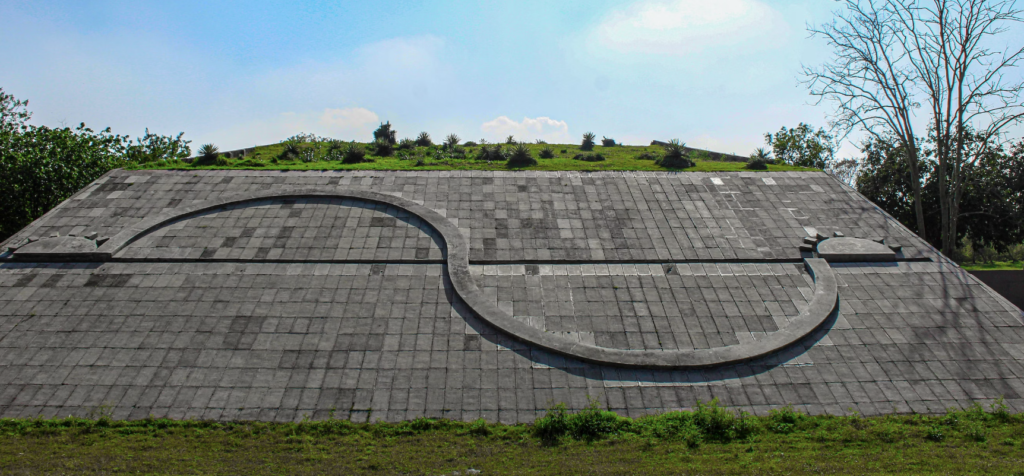
Recycled Aggregate and Materials
One of the most significant eco-friendly practices in residential concrete construction is the use of recycled aggregates and materials. Instead of using entirely new natural resources, recycled concrete aggregates, crushed glass, or even recycled plastic can be incorporated into concrete mixes. This not only reduces the demand for virgin materials but also minimizes waste in landfills.
Low-Carbon and Carbon-Capture Concrete
Low-carbon concrete, also known as eco-friendly concrete or green concrete, aims to reduce carbon emissions associated with traditional concrete production. It incorporates various strategies such as using alternative cementitious materials (e.g., fly ash or slag), optimizing mix designs, and implementing energy-efficient production methods. Additionally, carbon-capture technology is being employed in some concrete plants to capture and store CO2 emissions generated during production.
Sustainable Sourcing
Choosing locally sourced materials reduces transportation emissions and supports the local economy. When sourcing concrete materials, consider products that have been responsibly harvested or manufactured with low environmental impact. Certifications like the Forest Stewardship Council (FSC) for wood and the Green Building Council’s LEED certification for concrete can guide you in selecting sustainable options.
Permeable Concrete
Permeable or porous concrete is designed to allow water to pass through, reducing runoff and preventing erosion. This sustainable solution can be used for driveways, walkways, and patios. It promotes groundwater recharge, reduces the risk of flooding, and helps maintain the natural hydrology of an area.
Energy-Efficient Insulated Concrete Forms (ICFs)
ICFs are an excellent choice for residential construction, as they provide enhanced insulation and energy efficiency. These forms are typically made from foam materials and create airtight structures, reducing heating and cooling costs. Using ICFs also results in less waste during construction, making it an eco-friendly alternative.
Reusable Formwork
Traditionally, formwork used in concrete construction is often discarded after use. However, reusable formwork made from materials like steel, aluminum, or plastic can be utilized multiple times, reducing waste and saving resources in the long run. This approach is both cost-effective and environmentally friendly.
Solar Reflective and Cool Roof Coatings
Concrete roofs and surfaces can be treated with solar reflective and cool roof coatings that help reduce heat absorption. By reflecting more sunlight and emitting less heat, these coatings reduce the urban heat island effect and lower energy consumption for cooling, making them eco-friendly choices for residential concrete construction.
Conclusion
Eco-friendly practices in residential concrete construction are not only beneficial for the environment but also for homeowners looking to reduce their energy bills and carbon footprint. By incorporating recycled materials, embracing low-carbon concrete, sourcing sustainably, using permeable options, and making energy-efficient choices, you can create a greener, more environmentally responsible home. When planning your concrete construction project, consider consulting with professionals who specialize in green building practices to ensure you’re making the most sustainable choices for your home. In doing so, you can enjoy the benefits of a beautiful, energy-efficient, and eco-friendly residential space.


